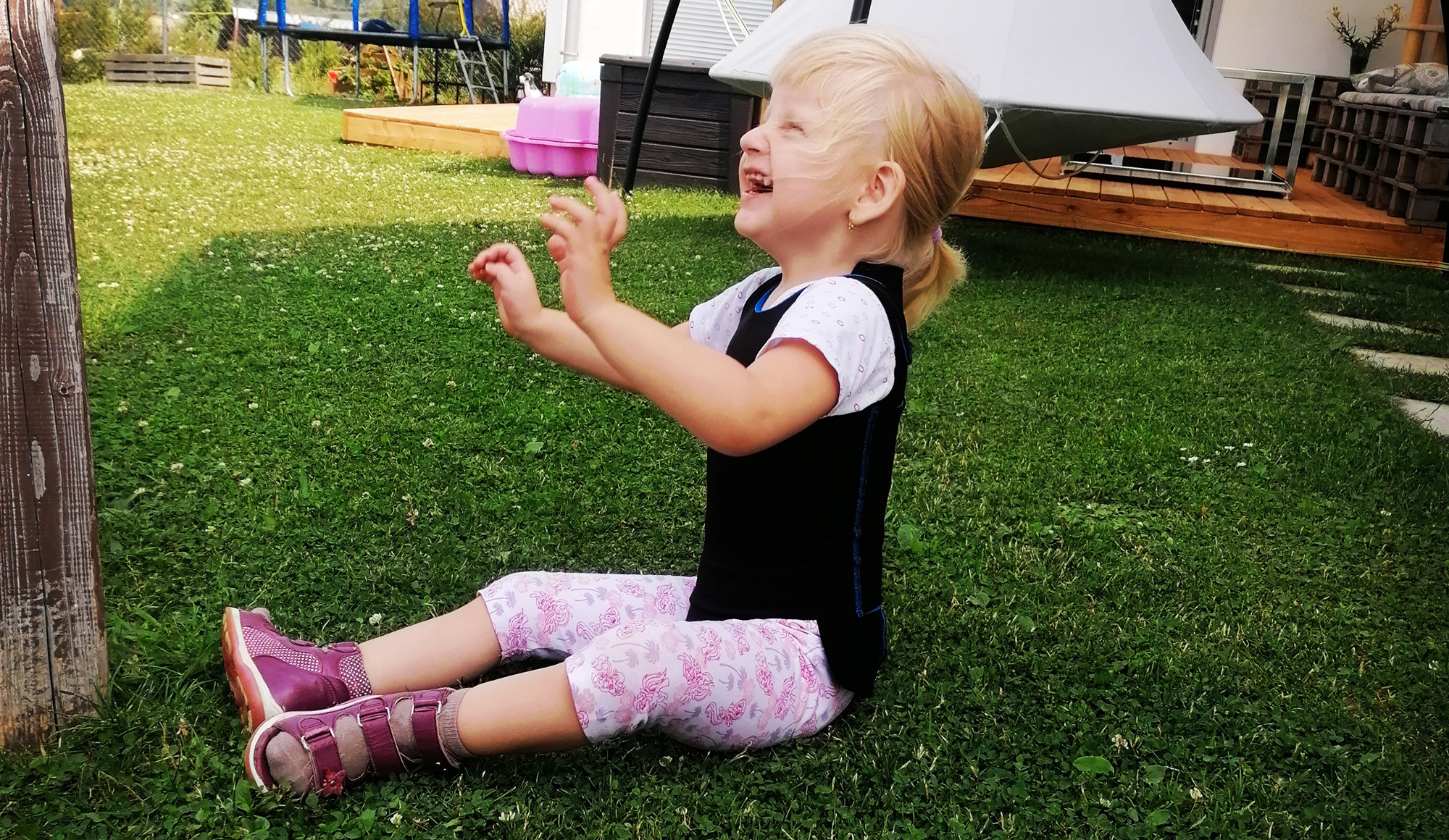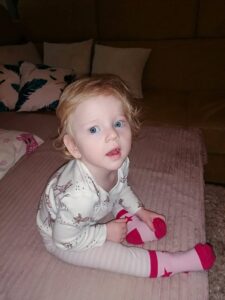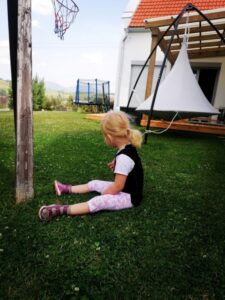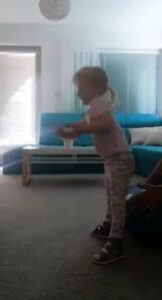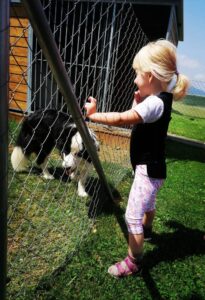Adela Bečová
Adela Bečová, born at term, weighing 3450g as a healthy newborn. The mother and the doctors pointed out that the child seemed very hypotonic and demanded further examinations.
She was diagnosed with Angelman syndrome at 8 months of age. They introduced physioterahpy with Vojta’s reflex locomotion exercises, which, however, did not improve the child’s motor expression, as expected by the mother. The mother was looking for other therapies. About 11 months later, she also added the NDT Bobath therapy.
The aim of the therapy was to increase muscle tension and strenghten the core, because the diagnosis shows that children with Angelman’s syndrome are children with severe hypotension, especially in the trunk area and with mental regresion.
At the time of initiating NDT-Bobath therapy, motor development was as follows:
Whole-body hypotonic so the girl was able to roll over on her abdomen and back – en block, using her upper limbs neither for movement nor for function.
We started the therapy by activating the abdominal muscles into rotation, and by inducing sitting, the sitting was unstable with marked kyphosis. Because we know that children reduced muscle tension, have a disturbed position and movement, we also used a PCO compression orthosis during therapy. The orthosis improved muscles tension and the proprioception and body scheme. This improved the neuromuscular response.
We also activated the lower limbs and feet to stand, so that we could include standing support, walking sideways, walking behind the walker, quadrupeds.
Currently also using the PCO orthosis Adelka manages walking in the space at home and outside the house alone (2.5 years)
Using the PCO system in sitting position we observe:
• the position of the head has been improved, the head is alignment, with free movement in all directions and ranges
• trunk position is improved and physiological curves are visibled (i.e. C-lordosis, Th-kyphosis, L – lordosis, S – kyphosis)
• the work of the upper limbs to function has improved
• overall, sitting position has improved by moving pressure from SI joints into ischial tuberosity
• the position of the lower limbs was improved – the supporting base of the lower limbs was narrowed and thus the abduction of the lower limbs in the hip joints was reduced
Using the PCO system in standing position we observe:
• the position of the head – alignment has improved
• the position of the shoulder girdles improved, they moved caudally, the interscapular muscles were activated and thus the upper limbs were used in the function
• abdominal and paravertebral muscles were strengthened – this reduced the kyphosis of the torso, the pelvis position is improved (reduced anterior tilt)
• the position of the lower limbs has improved – the support base in standing position has been narrowed even when walking
• walking is safer and more stable
While trunk hypotonia, it is recommended to use a PCO orthosis for children during therapy and during normal daily activities.

